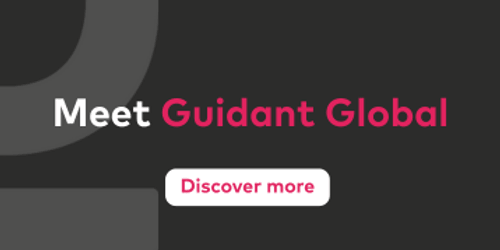

Author
3 minutes
People analytics: have we really evolved?
Data-driven decision making is considered critical in the corporate world. Building a business case for new investment, strategic change and future growth plans often relies on statistics. But when it comes to a firm’s most important (and often most expensive) asset – its people – data can be hard to come by.
Back in 2013, leading HR commentator, Josh Bersin, was spreading the word about big data in HR. The potential opportunity that data analytics presented HR teams with was seemingly endless. But almost ten years later, have we moved much further or is there still some resistance?
Are people analytics important for your firm?
While my immediate answer to this question is a resounding ‘yes’, statistics cited in the recent Global Talent Economy report from Raconteur, published in The Times, suggests more than half of employers don’t agree. The special edition launched at the end of September revealed that 49% of organisations believed candidate analytics were important.
This figure may represent almost half of global firms, but that still leaves 51% of businesses failing to recognise the value of data in their people strategies. Talent analytics plays a significant role in guiding business decisions, but in a global environment where reliance on gig and contingent workers is growing, data is critical.
Statistics have tracked the growth of the gig economy for some time. In the US, data from Gallup revealed that around 36% of the American workforce are gig workers, with forecasts from Wonolo and Statista suggesting that more than half of the US workforce will be doing some form of freelance work by 2027.
The UK is experiencing a similar scenario, with the Office for National Statistics revealing a rise in self-employed workers in the three months leading up to August 2022.
The importance of data for contingent workforce management
As the flexible segment of the workforce grows, the need to make data-driven workforce decisions, monitor success and track trends intensifies. Agile working may be the future, but it’s more difficult to plan and control – particularly when it comes to spend and compliance.
Global statistics will also be heavily relied on. We’ve already seen borderless recruitment become normalised post-Covid. If your business is growing internationally, do you have the data on talent access across the globe to inform this expansion? If the answer is no, you will soon find that strategic decisions are being made that are unachievable due to unrealistic workforce expectations.
HR teams will increasingly need to rely on data to build the business case for contingent spend and demonstrate success, and this will need to be aligned with the permanent workforce.
Challenges with analytics
One of the reasons that firms haven’t integrated people analytics effectively is that it isn’t easy to do. Talent statistics are difficult to collect, tough to analyse and problematic to assess with an analytical and human hat on.
The sheer scale of HR software available also makes people analytics a challenge. Data from Aptitude Research (cited by the Raconteur report) suggests that a lack of integration is the biggest frustration for 49% of businesses.
Issues with the quality of data is a problem for a third of firms (33%), while a further 38% have a concern about poor user experience.
What is and isn’t working?
When we look at what type of analytics HR teams have to embrace effectively, the Raconteur report reveals some interesting trends. Encouragingly, 67% of human resources experts felt that their firm had been very or moderately successful at fostering a data-driven culture.
A further 71% indicated that their business had successfully provided HR teams with direct access to the data and information they need. This suggests that the foundations are broadly in place to make people analytics work in most organisations.
However, there’s clearly room for improvement. More than half (53%) of respondents revealed that their company hadn’t been successful in using predictive analytics to drive policies and actions, and 45% revealed that they weren’t able to establish enterprise-wide metrics.
How is data being used?
The Global Talent Economy report also revealed interesting trends in when data is used. The Aptitude research showed that interview data is most used in hiring decisions, with 62% of business leaders using this information in recruitment decisions for 2022 so far. Assessment data ranked second (58%), while background screening analytics came third (52%).
While it wasn’t listed as the least used data source, resume or CV analytics usage has seen the biggest drop over the last three years. While this information was used by 71% of businesses when making hiring decisions in 2019, this has dropped to just 41% in 2022.
A better way to work: challenge yourself
It may be encouraging to note that the Raconteur report suggests that half of HR leaders believe their team is data literate. The fact that 35% of employers also stated that using data more effectively is a top priority shows a general recognition that people analytics can be improved. But clearly more can and needs to be done. In the next year, those 50% of HR professionals who aren’t data literate need to be upskilled. Prioritising better data usage needs to be top of the agenda for every business, not just 35%.
HR teams are used to dealing with the human aspect of business. While people need to remain at the heart of everything you do, data has a powerful role to play in shaping the future of workforce management.
Want to know how to make people analytics work for your contingent workforce? Contact us today for a no-obligation conversation. And don’t forget to access your copy of the Raconteur report here.
Insights to drive workforce performance
Workforce insights in your inbox
Sign up for our newsletter with the latest workforce management news, insights, analysis and more.
Australia
Suite 1403, Level 14
309 Kent Street
Sydney
NSW 2000
United Kingdom
United States
27777 Franklin Road
Suite 600
Southfield
Michigan 48034








